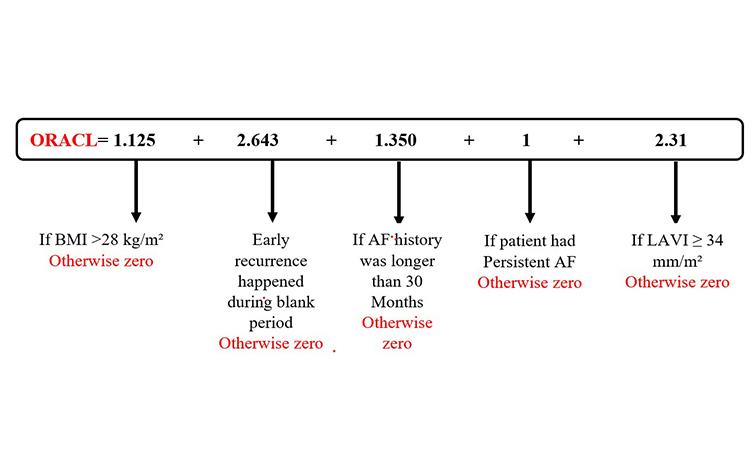Long-Term Follow-Up Results of Atrial Fibrillation Patients Who Underwent Pulmonary Vein Isolation Using the Cryoballoon and Radiofrequency Ablation and ORACL Score: A Simple Scoring System for Late Atrial Tachyarrhythmia Recurrence Prediction
ORACL Score for Late Atrial Tachyarrhythmia Recurrence Prediction
Keywords:
atrial fibrillation, catheter ablation, prediction, recurrence, scoreAbstract
Background: Atrial fibrillation (AF) is a common supraventricular arrhythmia affecting both elderly and younger patients. Invasive treatments, particularly radiofrequency and cryo-energy therapies, have offered varying durations of AF-free life to patients. However, despite successful invasive therapy, recurrence rates remain significant. Numerous studies have aimed to develop predictive scoring systems for AF recurrence (such as APPLE, MB-LATER, and BASE-AF). Our primary objective was, like previous AF recurrence predictors, to develop a practical yet accurate scoring system (ORACL Score) that does not rely on biochemical parameters. We compared this novel scoring system to existing recurrence prediction models.
Methods: We retrospectively reviewed 159 patients with a mean age of 55.6±10.1 who underwent second-generation CB or RF ablation between June 2014 and December 2022. All patients diagnosed with AF were questioned regarding comorbidities, and blood tests, echocardiography (TTE), complementary echocardiography (TEE), and pulmonary CT angiography were conducted. Post-procedural follow-ups were conducted at the hospital, initially at one month, then every three months, and subsequently for longer periods. Independent late atrial tachyarrhythmia recurrence predictors were defined after multivariate logistic regression analysis. Based on these estimators, the ORACL-Score system was designed. The acronym stands for “O”verweight (BMI > 28 kg/m²), “R”ecurrence occurring early, “A”F duration, “C”ategory of AF (Persistent or Paroxysmal AF), and “L” LAVI ≥ 34 ml/m².
Results: The mean follow-up period of the population was 41.9±27.4 months. Of the population, 36.5% (n=58) experienced late recurrence (LR), resulting in a tachyarrhythmia-free survival rate of 63.5%. Among these patients, 35.2% had an ORACL-Score of >2.2. Patients with LR exhibited a higher mean ORACL-Score (3.3±1.76 vs. 1.32±1.2, p<0.001) compared to those without tachyarrhythmia recurrence. ROC analysis revealed that an ORACL-Score of >2.2 successfully predicted late atrial tachyarrhythmia recurrence with a sensitivity of 70% and a specificity of 84% (AUC = 0.835, p<0.001) and was defined as an independent predictor of LR (HR: 10.1, p<0.001). Multiple prediction score systems were calculated for each patient, and a collective ROC analysis was performed for comparison purposes. The ORACL-Score maintained its superiority over former score systems with better AUC values and sensitivity/specificity values ([APPLE; AUC = 0.663, p=0.001], [MBLATER; AUC = 0.744, p<0.001], [BASE-AF₂; AUC = 0.754, p<0.001]).
Conclusion: The ORACL score has demonstrated effective and consistent performance as a novel recurrent prediction method in non-comorbid patients diagnosed with AF, without the requirement for additional biochemical parameters, in comparison to previous methods. It could serve as an auxiliary tool in guiding interventional clinical strategies.

Downloads
Published
License
Copyright (c) 2024 JOURNAL OF ARRHYTHMIA AND ELECTROPHYSIOLOGY (JAE)

This work is licensed under a Creative Commons Attribution-NonCommercial-NoDerivatives 4.0 International License.
The journal's content is licensed under the Commons Attribution-NonCommercial-NoDerivatives 4.0 International License.



